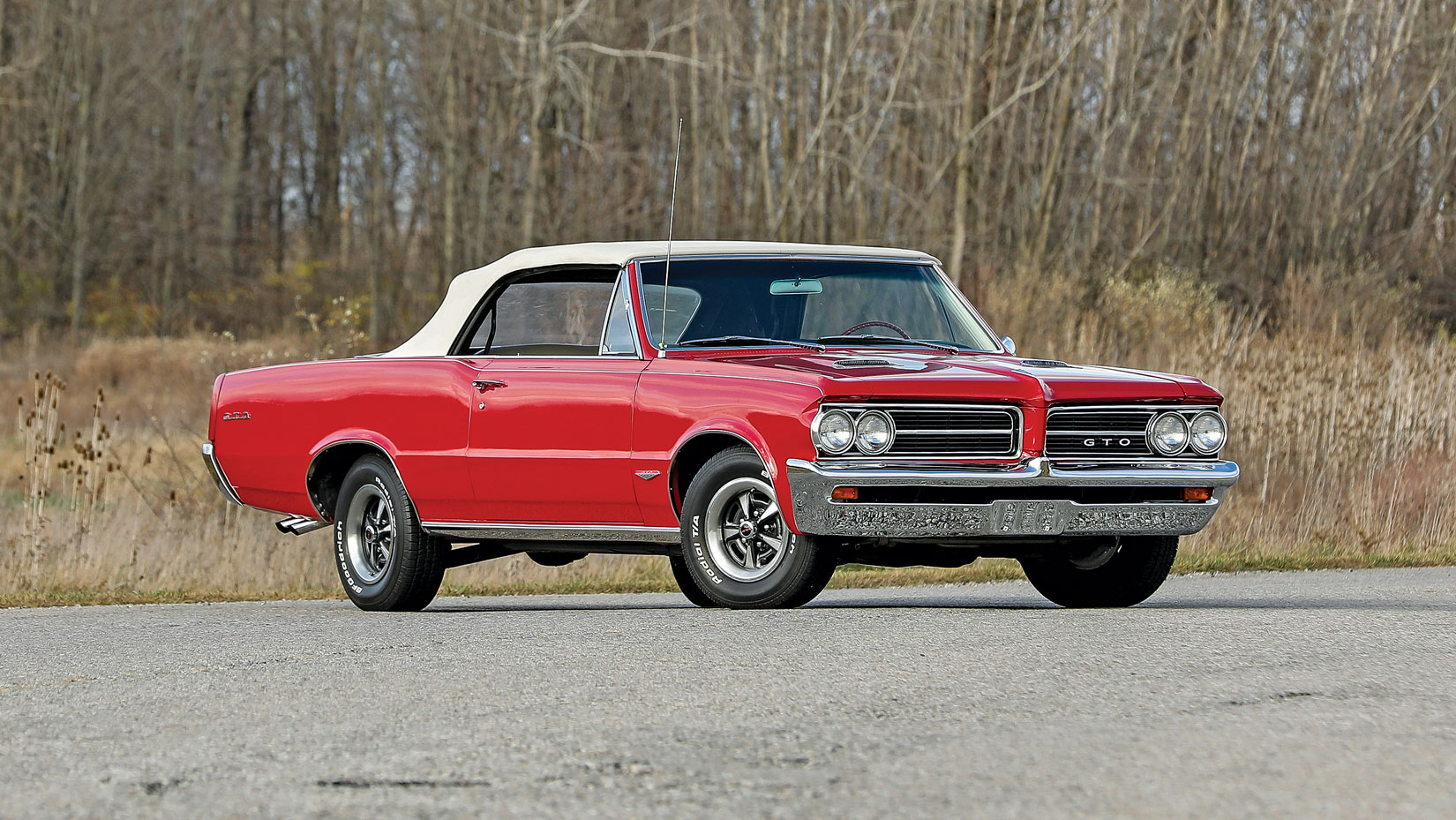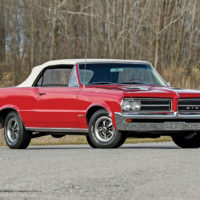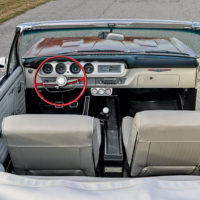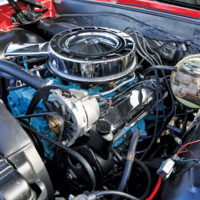SCM Analysis
Detailing
| Vehicle: | 1964 Pontiac GTO Convertible |
| Years Produced: | 1964–67 |
| Number Produced: | 6,644 (1964 convertibles) |
| SCM Valuation: | $48,000 |
| Tune Up Cost: | $450 |
| Chassis Number Location: | Top of the frame rail under the trunk pan behind the left rear wheel |
| Engine Number Location: | On front of block below left cylinder head |
| Club Info: | GTO Association of America |
| Website: | http://www.gtoaa.org |
| Alternatives: | 1964 Plymouth Fury, 1964 Dodge Polara, 1964 Oldsmobile Cutlass 442 |
| Investment Grade: | B |
This car, Lot 21, sold for $64,960, including buyer’s premium, at Worldwide Auctioneers’ The Enthusiast Auction on April 24, 2021.
The origin story of the Pontiac GTO is well known. In 1957, Semon “Bunkie” Knudsen joined Pontiac Motor Division as general manager and soon hired engineer John Z. DeLorean away from Packard. New performance cars like the Bonneville, Catalina and Grand Prix followed, transforming Pontiac from dullsville to General Motors’ darling. But the second-generation Tempest, built on a new midsize platform, would become DeLorean’s crowning achievement.
Medium-sized car, big motor
Pontiac engineers Russ Gee and Bill Collins swapped the Tempest’s 326-cid V8 for the hot 325-hp 389 from the Grand Prix, an easy chore since all Pontiac V8s had the same exterior dimensions. The seminal muscle car was shown to DeLorean, who knew GM’s Engineering Policy Group would reject such a powerful machine. But it didn’t get the opportunity, as the GTO package was instead offered as a $295 option on the 1964 Tempest LeMans.
“It was an electrifying car. It gave you the feeling and performance of an expensive foreign sports car,” said DeLorean in his quasi-memoir, On A Clear Day You Can See General Motors, by J. Patrick Wright. “But it was basically a low-cost car to build. A car most people could afford.”
Management didn’t think Pontiac would sell 5,000 GTOs, but instead 32,450 units, including 6,644 convertibles, were snapped up. This despite launching later in the 1964 model year. The GTO would become a separate model in 1966, and later GTOs would have greater performance, refinement and style. Yet for a first effort, the original GTO was quite amazing.
Buzzword bingo
One look at our subject car, with its clean, crisp lines, and it’s easy to see the appeal of these automobiles. No doubt, much effort has gone into this GTO and the results speak for themselves. While the catalog description contains all the right buzzwords, it’s worth reading between the lines to see what the buyer really got.
First, let’s tackle the claim that this GTO was “restored.” Much of the work on our featured GTO was clearly done to a high standard, but it’s also been modified to be more pleasurable to drive. The result is far from a resto-mod and it looks a restoration, but it is really neither. Some would call the car “restified” or a “restification.”
No matter what you call it, it would not be eligible for GTO Association of America (GTOAA) concours judging, due to its incorrect equipment, principally the added front disc brakes and power steering. The later Rally II wheels would be easy enough to correct. And perhaps in an afternoon’s work you could yank the mammoth sound system — it would probably sell quickly on Craigslist.
Behind the numbers
There is also the strong appeal of our subject car’s “numbers-matching” engine, transmission and rear diff. This, of course, implies that the major components are the originals with which our GTO rolled off the assembly line. But understand that American automobiles from this era simply do not have matching serialized components. All you can “match” are date codes on these items. The way factories installed components on the assembly lines, the actual dates could vary by weeks or even months.
That said, our GTO quite possibly does carry its original major components. There is certainly value to that — just not the same weight as on a hand-crafted European sports car of the same era.
Factory fresh
If the new owner just wants to make the scene at the local cruise-in, none of this really matters. But such issues can be crucial in determining value.
Just as with pricier European marques, there are people who do Pontiacs to exacting factory standards. Probably the most well-known is Scott Tiemann’s Supercar Specialties in Portland, MI. That reputation was forged when a similar ’64 GTO convertible that he brought back to life sold at Gooding & Company’s 2015 Scottsdale sale for $330,000 (SCM# 256811).
Back in the real world, the SCM Pocket Price Guide shows the median value of a ’64 GTO ragtop to be $48,000, down a bit from $55,000 in 2019. This example, with its above-average condition and presentation, deserved above-average money — and got it. The new owner can now choose to drive and show the car in its current state or put right the few concessions to convenience that mar its originality. ♦
(Introductory description courtesy of Worldwide Auctioneers.)



